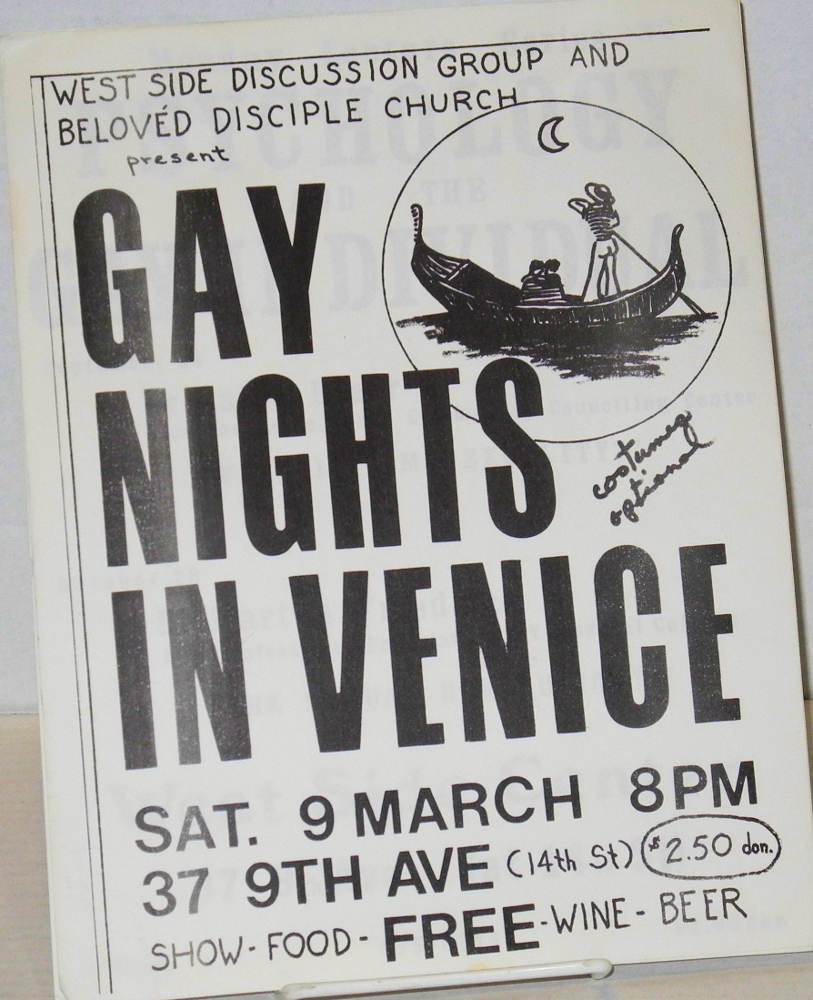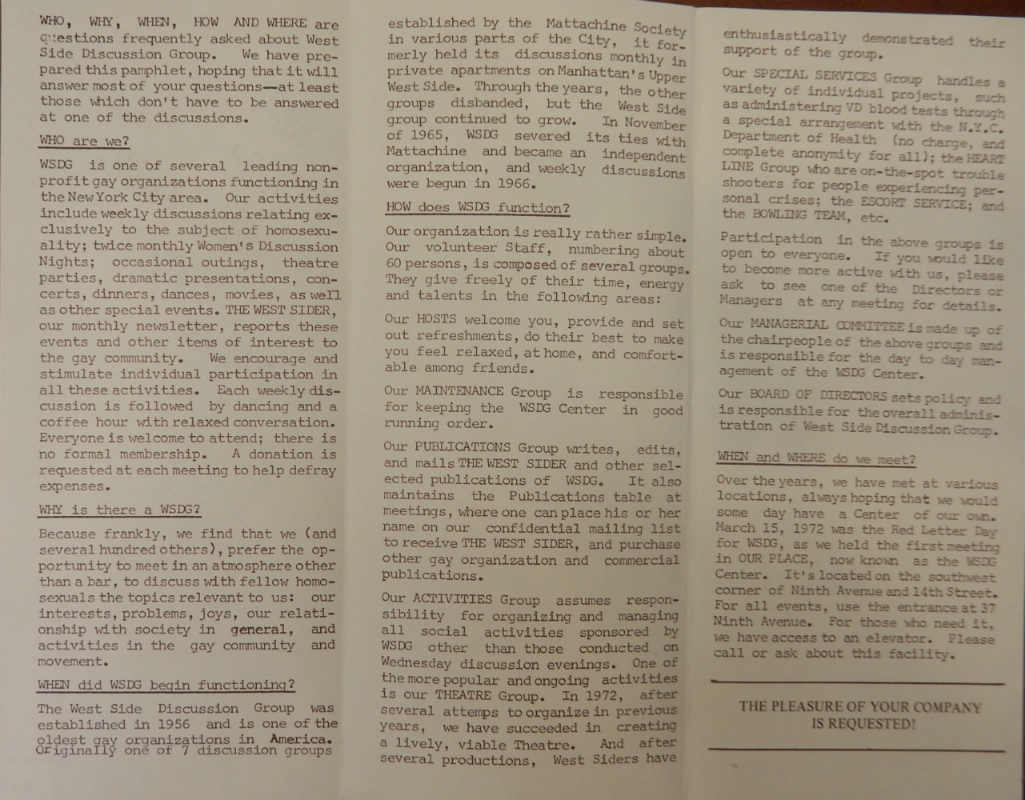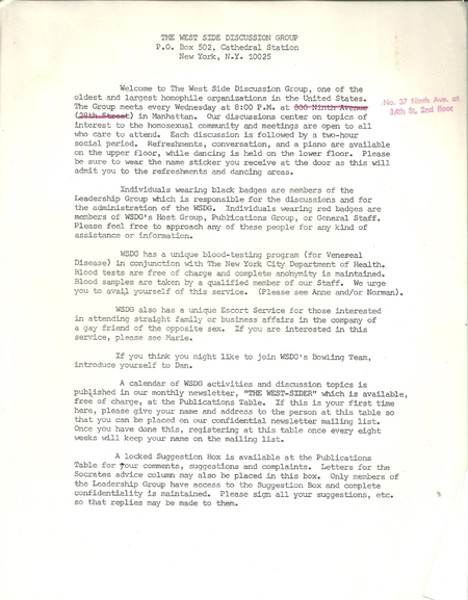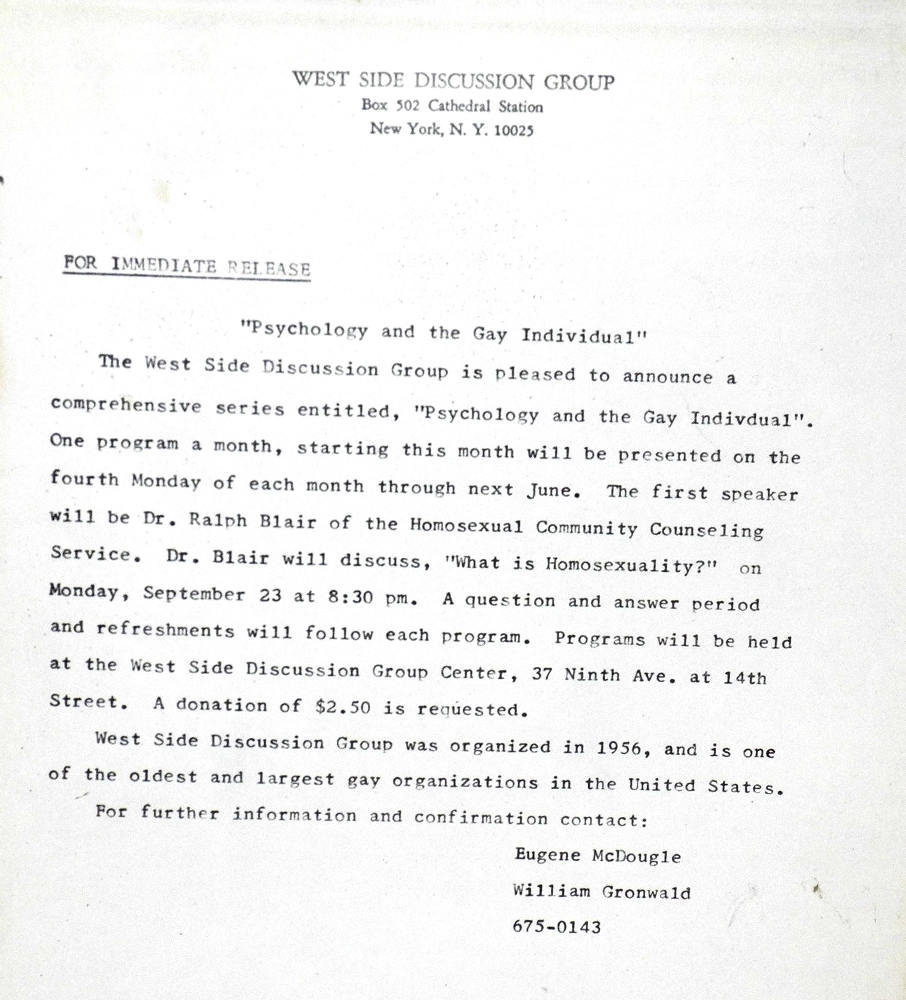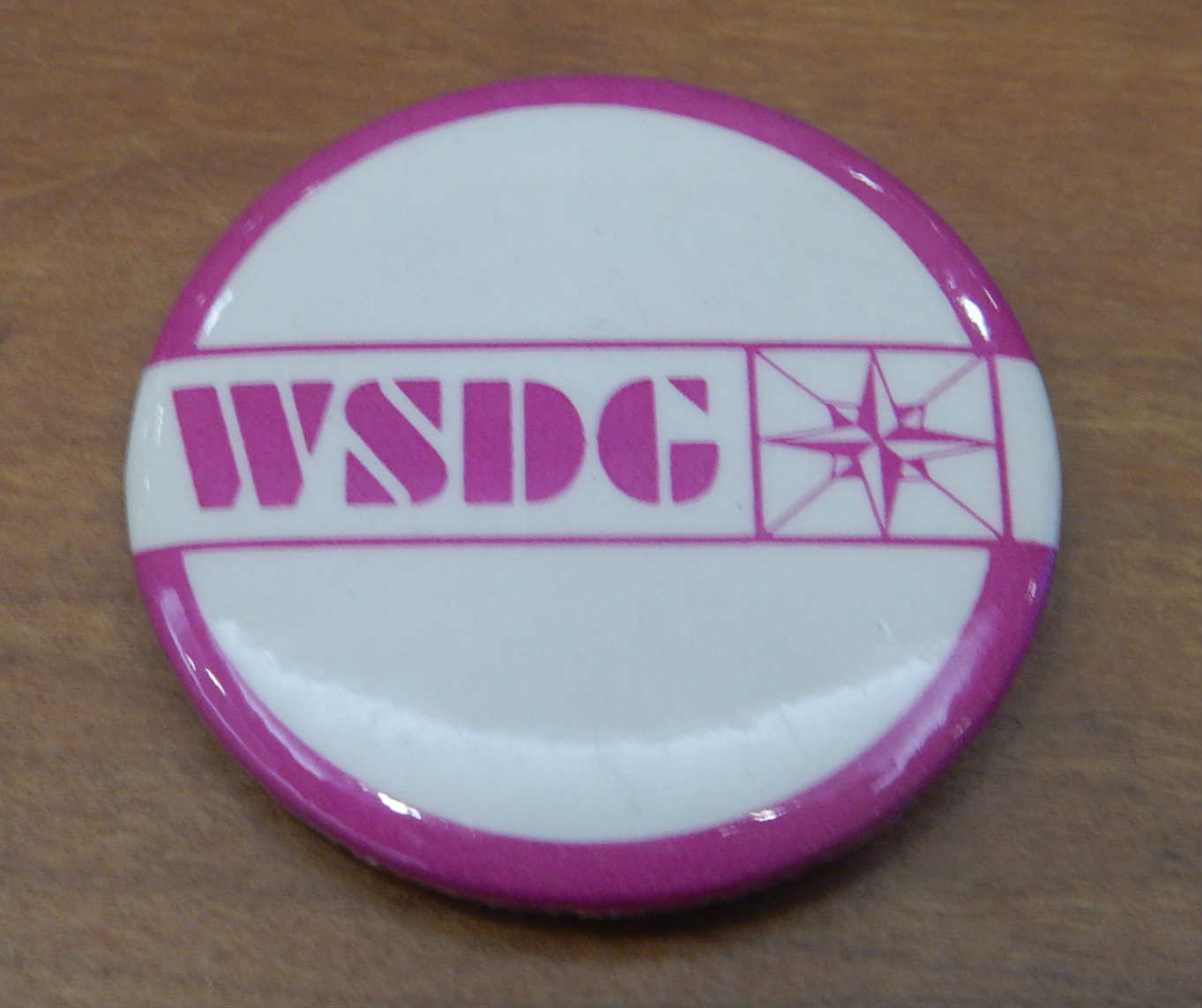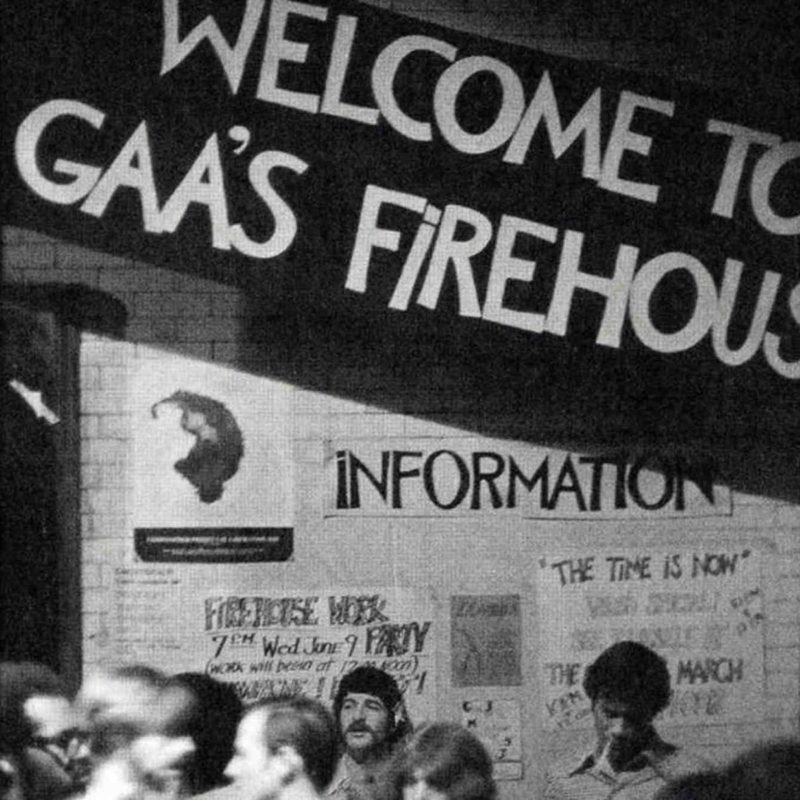
West Side Discussion Group Center
overview
This building in the Meatpacking District was the longest home of the West Side Discussion Group, which met here from 1972 to 1978.
The group, generally made up of an older, more conservative membership, held weekly discussions and provided a social alternative to the bar scene.
See Lee G. Brewster’s Mardi Gras Boutique for more information on this site’s LGBT history.
History
Initially part of the Mattachine Society of New York, which sponsored neighborhood discussion groups, the West Side Discussion Group (WSDG) became a separate organization in 1956. It dropped its affiliation with Mattachine in 1965 after more militant leaders took over Mattachine.
WSDG thus became an older and more conservative group within the homophile movement. Mattachine activist Randy Wicker reminisced that “our largest committee, ‘the West Side Discussion Group’, was really mainly a social club. They held socials once a week (Wednesday nights) where people could meet and mingle in a setting quite different from a gay bar. Ironically, WSDG survived for years and years after the Mattachine Society had disappeared.” He continued,
People loved to have somewhere to go to have a lively discussion, socialize and mingle in the middle of the week.
In its early years, WSDG met in members’ apartments, but as membership grew they sought out their own space. Meeting locations included Freedom House (c. 1960-1966), 20 West 40th Street (demolished); the Corduroy Club (1967-69), which WSDG established; the Church of the Holy Apostles (1969-71); 348 West 14th Street (c. 1971-72); 26 Ninth Avenue (1978-80); Greenwich House (1980-82), 27 Barrow Street; and what is now known as the LGBT Community Center (c. 1985).
WSDG’s first real home, and its longest, from March 1972 to 1978, was the West Side Discussion Group Center at 37 Ninth Avenue in the Meatpacking District. By 1972, approximately 250 people were attending the weekly discussions, which covered a wide range of topics and included many prominent guest speakers. Beginning that year, WSDG also began offering a discussion group for women. WSDG was also closely connected to the Church of the Beloved Disciple, which formed in 1970 and met at Holy Apostles. The West Side Gay Theatre (c. 1973-75) performed in this space and Gay Youth met here. In August 1976, the Gay Activists Alliance (GAA) – after the loss of the Firehouse on Wooster Street – started meeting here. There were regular dances between GAA and WSDG.
Eugene McDougle was WSDG’s coordinator. In August 1974, he rented space here to the founders of Les Ballets Trockadero de Monte Carlo, the all-male comedy ballet company, for their debut performances. McDougle would become General Director and is credited with leading the group, which still exists, into the professional realm.
In the 1990s, gay bars Locker Room (1990), Magic Garbage Can, Mike’s Bar (1993), and The Toilet were located in this building. See Lee G. Brewster’s Mardi Gras Boutique for more information on this site’s LGBT history.
Entry by Jay Shockley, project director (March 2017).
NOTE: Names above in bold indicate LGBT people.
Building Information
- Architect or Builder: Joseph M. Dunn
- Year Built: 1886
Sources
Daniel Hurewitz, Stepping Out: Nine Walks Through New York City’s Gay and Lesbian Past (New York: Henry Holt & Co., 1997).
David Carter, Stonewall: the Riots That Sparked the Gay Revolution (New York: St. Martin’s Press, 2004).
John D’Emilio, Sexual Politics, Sexual Communities: the Making of a Homosexual Minority in the United States, 1940-1970 (Chicago: University of Chicago Press, 1988).
New York City Landmarks Preservation Commission, research files. The West Sider (1968-87)
“Randolfe Wicker: From Pot to the Days of Wine and Cloning,” interview by Raj Ayyar, Gay Today, October 1, 2002, bit.ly/2gyf6up. [source of pull quote]
Richard Flynn, “Wednesday Night Dance-Ins: the West Side Discussion Group Swings,” GAY, December 31, 1969.
Tory Dobrin, Artistic Director, Les Ballets Trockadero de Monte Carlo, e-mail to NYC LGBT Historic Sites Project, November 30, 2017.
Do you have more information about this site?
This project is enriched by your participation! Do you have your own images of this site? Or a story to share? Would you like to suggest a different historic site?

